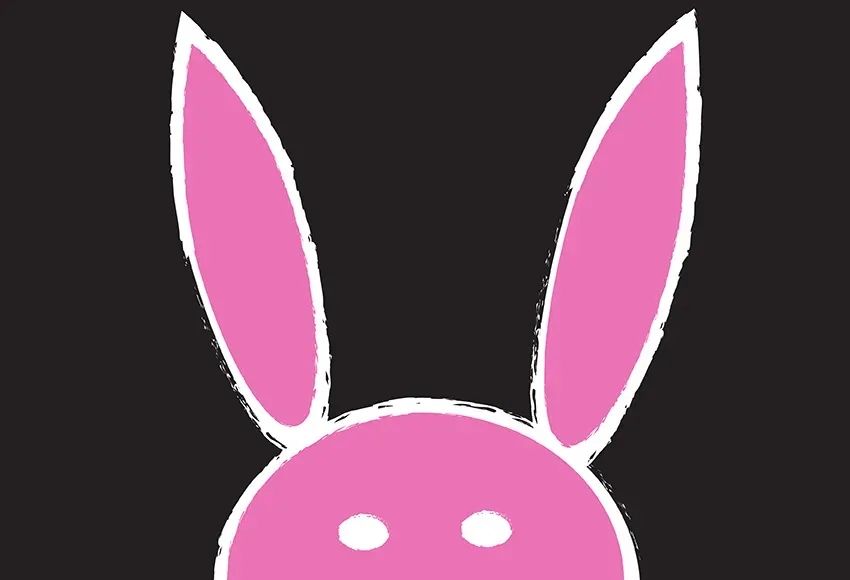One busy trivia night in Queen Anne, I was two drinks deep with a college friend and made a passing reference to my "fursona."
I remember lending the notion of this rabbit-shaped self about the same gravity as I would my favorite band. It had become a simple, lightweight fact of life – one feather of many in the layered wings of my identity – but as the shadows of my friend's smile deepened into a grimace, I knew that she had passed some mental event horizon and was staring into the abyss of a collapsing star.
For her, this "fursona" was a loaded subject. She lowered her voice, glanced at the other tables, and asked if we could simply not talk about it. Out of respect, I let it go, and even though the night went on as usual, I was surprised and a little hurt.
In retrospect, I shouldn't have been surprised. After all, a good punching bag needs weight, and the furry fandom has a lot of baggage – much of it heaped on by media misrepresentation in the early 2000s, and then compounded by internet "cringe culture."
Don't take my word for it. The International Anthropomorphic Research Project (IARP), a group of sociologists and furries alike, has been studying the furry fandom for years. Its findings debunked some of the most common stereotypes, such as the fandom being nothing more than a "deviant sexual fetish," and all furries believing that they're animals trapped in human bodies.
In fact, only about 4% of furries considered sex the most important part of the fandom, and just 10% believed they were less than 100% human. Yet furries "were significantly more likely to have a history of being physically and verbally bullied," and most felt reluctant to tell the people in their lives about their involvement.
Here's where things get Queer: only about 20% of surveyed furries identified as exclusively heterosexual, compared to the general population's 80-90%. Meanwhile, 10% of respondents identified as Asexual, and 15% as Trans, Nonbinary, or Agender.
What is it about the furry fandom that brings in so many LGBTQIA+ people? The IARP cites a general ethos of positivity and acceptance, but to answer the question more thoroughly and personally, I'd like to bring us back to trivia night in Queen Anne.
I hate having to spend so many words hauling old myths into the ditch where they belong, but at one stage of my life, like that college friend, I too was weighed down by false assumptions about the fandom.
Up until 2016, the most I could admit was that I had loved anthropomorphic media from an early age. But I had also just been through a bad breakup, on top of all the other awful events of that year.
Pain has a way of urging us to express it, and it was from pain that my fursona was born – not purely as some angsty, self-pitying creature but as something akin to an ideal self, a reliquary to preserve what really mattered to me, even under the withering gaze of self-doubt.
A fursona gives many furries a way to divorce personality traits from gender identity. Being a "man" means I'm expected to be strong, stoic, and aggressive. If I instead adopt the symbolism of a jackrabbit, I have the space to be anxious and sensitive, but also rugged and tenacious in a pinch. (They are desert-dwellers, after all.)
In 2019, I finally took the plunge and attended my first furry convention, Anthro Northwest. I admit I had braced myself for the worst, but I was trying to keep an open mind.
I had attended other kinds of conventions before, for anime, comics, and movies. Some of them were 60,000 strong. But none could hold a candle to the energy of the 1,200 or so furries at the Hyatt Regency that weekend. Everyone was friendly, happy to be there, and so readily supportive that I almost didn't believe it.
The real draw to the furry fandom is a sense of belonging, because to live as a Queer person is to be reminded of what the world expects from you, and constantly fall short. Shouting to the heavens "to hell with it!" is a fine way to cope, but often it takes more than that to make living bearable – just to feel, for even a moment, what it's like to be unapologetically alive on your own terms.
So why not howl at the moon, if that's what it takes? Bring some friends while you're at it. Stomp your feet, wear a tail, draw yourself as a capybara. If it doesn't do anything for you, that's fine. But let's stop pretending that it makes any less sense than reading tarot or painting your nails.


